Last November, I finally made it to Mt. Koya in Wakayama, Japan after several friends told me that it was a great place to get away from it all and truly get a closer look into the ancient Buddhist culture of Japan. When I learned that Mt. Koya also has 52 temples where people can stay overnight and eat food prepared by monks, I was sold!
Before I go any further, let me first quickly explain Koya-san to you. It is actually eight different mountains reminiscent of a lotus flower that a Buddhist monk named Kobo Daishi, or Kukai, chose as his spot to set up the Shingon sect of Japanese Buddhism back in 819 AD.
Kobo Daishi, by the way, is one of the most famous people in Japan’s religious history and the founder of Mt. Koya-san. If you take a look at Koya’s san’s official website, it is clear that he was one impressive dude. Born into a devout Buddhist family, he was trained in history, Chinese classics, and Confucianism at a young age and is famous for his talent as a composer of Chinese poetry. He entered the Buddhist priesthood at the age of 20 and spent two years in China mastering Esoteric Buddhism in his early 30s. Returning to Kyoto, he quickly established a strong reputation in the religious community and was granted the right to build a monastic complex on Koya-san by the reigning emperor Saga in 816. Until his death in 862, in which it is actually said that he did not “die” but entered a state of eternal meditation within the complex at Okunoin, he continued writing, laying the foundational texts for the Shingoin-sect of Japanese Buddhism and opening a private academy for the study of Confucianism and Buddhism.
The original monastery founded by Kobo Daishi once had over 1,000 temples spread out over the surrounding mountains, but the modern version of Koya today includes 117 temples and a university dedicated to religious studies. According to Koya-san’s official website, 52 of these temples currently offer “shukubo,” or accommodation attached to a Japanese temple or shrine. When visiting Mt. Koya, most visitors stay at one of these temples and participate in a variety of temple programs while also making sure to visit the “Danjo Garan” area, a complex of temples, halls, pagodas and Buddhist statuary that welcome visitors to this serene and hallowed place, as well as Okunoin Cemetery, which is Japan’s largest cemetery with over 200,000 tombstones. Once inside Okunoin Cemetery, a path of almost 2 km through the cemetery leads to Torodo Hall, which is Okunoin’s main place of worship and has over 10,000 lanterns that were donated by worshippers and are kept eternally lit. Just behind Torodo Hall is Kobo Daishi’s mausoleum (known as Gobyo), where Kobo Daishi is said to in eternal meditation. To the right of Torodo Hall is a separate building that is a type of lantern storehouse that is also a wonderful place to visit (and I promise you—you’ve never seen so many lanterns all in one place).
Getting to Mt. Koya
Upon the recommendation of a friend, for my first trip to Mt. Koya, I decided to stay at Ekoin Temple, which just happens to also be #1 on TripAdvisor. If you would also like to stay at Ekoin Temple, I highly encourage you to book as far in advance as you can, as I had to book six months in advance to find a weekend that was free during the peak autumn season! It might be easier to book a weeknight if at all possible.
As luck would have it, my friend, Naoko, contacted me to say that she was returning to Japan on a family visit, and when I told her about my plans for Koya-san, she confirmed that she would able to join me for what would also be her first time to this lovely mountain retreat. I couldn’t wait to catch up with Naoko, who I hadn’t seen in more than three years, while also getting to spend a night in a Buddhist temple.
Naoko and I met at Tokyo station and actually ended up staying for our first night in Kyoto as a quick stop over before getting up early the next morning to make the rest of the journey to Koya-san. It turned out that Koya-san was actually a much longer journey coming in from Tokyo via Kyoto than I had initially thought and Naoko and I found ourselves changing train about four times before we finally reached Koya-san itself. The most direct way to get to Koya-san is actually from Osaka’s Namba or Shin-Imamiya stations. Taking the Nankai Koya line from either of these stations will get you to Gokurakubashi station in about 80 minutes on one of the limited express trains (of which there are five per day, please check the train schedules accordingly). Be prepared for an incredible journey on the Nankai line, as the train takes you along the edge of the forest with breaktaking views almost the entire way to Gokurakubashi station. Once you reach Gokurakubashi station, you then have to take a cable car for five more minutes to reach Koya-san station. This is actually one of the most exciting parts of the journey, and the temperature seems to drop significantly even with the short ride up the mountain.
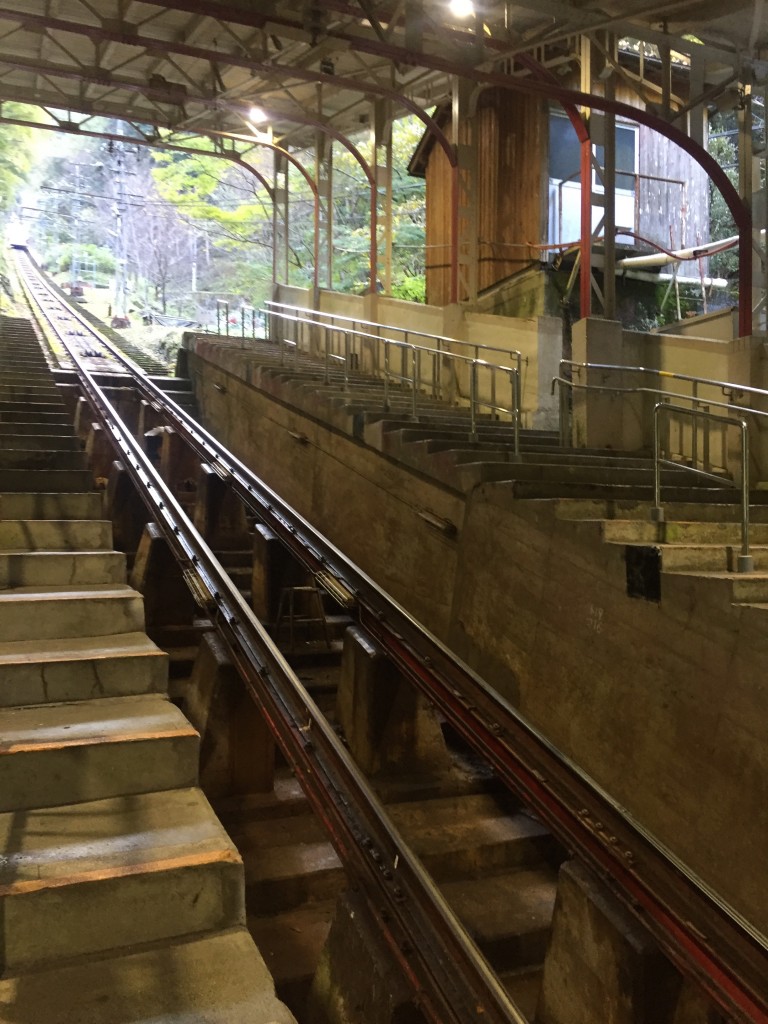
Cable car going up to Koya-san station
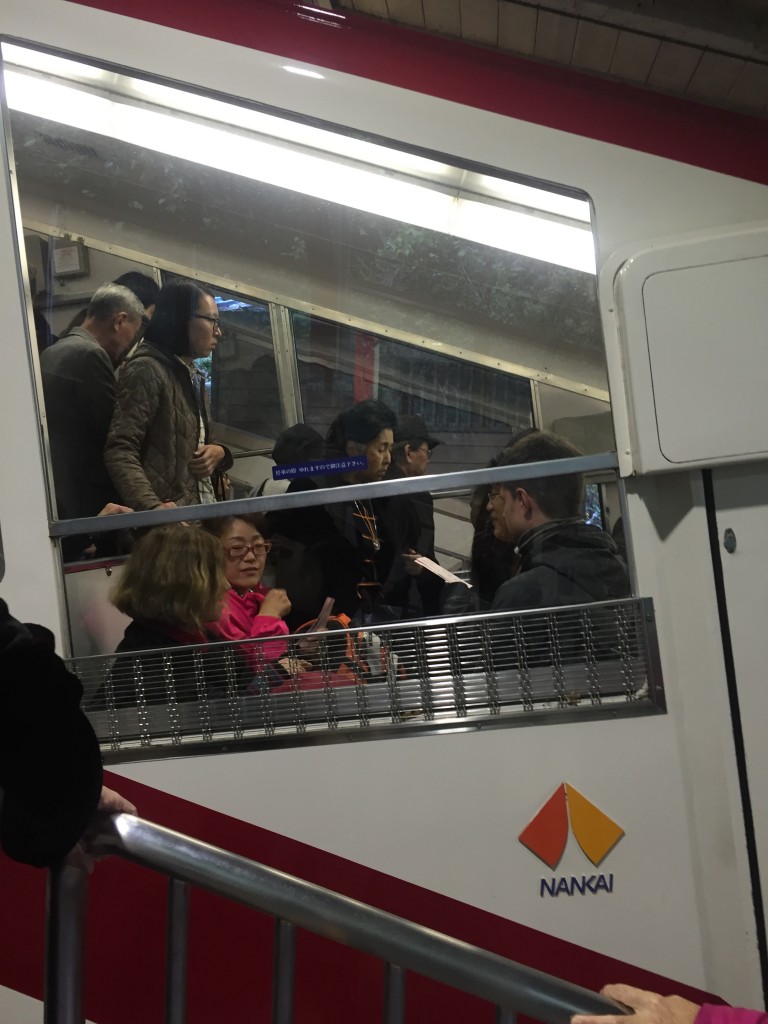
What a fun cable car ride!
Staying in a Buddhist Temple
Once Naoko and I reached Koya-san station via cable car, we were immediately guided by the station staff to the next bus that would eventually take us to Ekoin Temple, and is actually one of the closest temples to Okunoin Cemetery.
As soon as we arrived, we were greeted by a monk in light orange robes who kindly asked us to wait in a small alcove that doubled as the temple’s reception area and explained the schedule of the temple’s activities. Ekoin Temple not only provides Ajikan meditation at 4:30pm every day led by one of the resident monks but also provides a special night tour of Okunoin cemetery for an extra 1500 yen that meets at the entrance to Ekoin Temple on nights when it is not raining. Temple guests can also opt to practice writing Buddhist sutras or attend a fire ceremony at 6am that is said to be a ritual cleansing to keep evil spirits away.
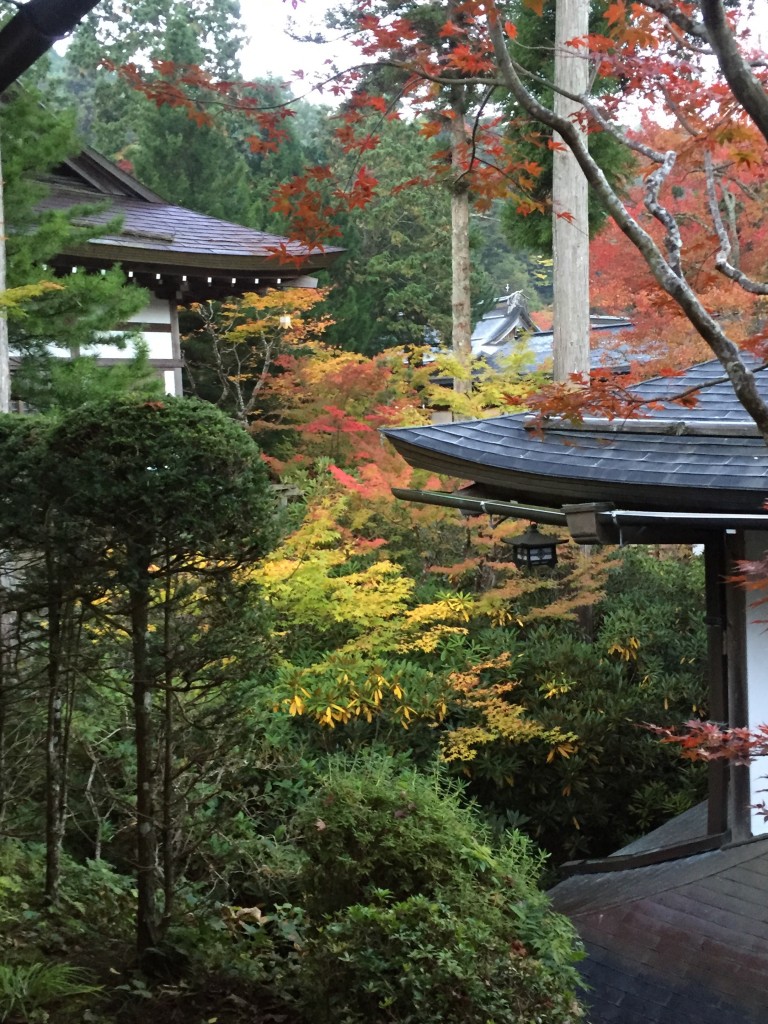
Views from Ekoin Temple
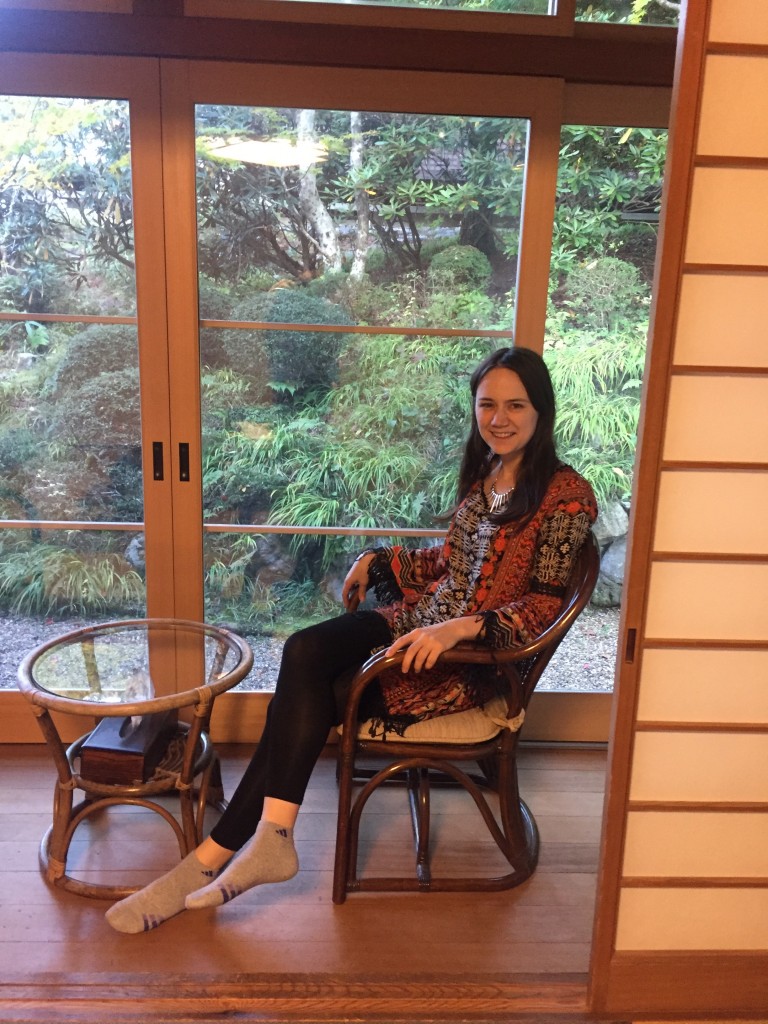
Chilling out at Ekoin – my first night in a Buddhist temple! Do you like my socks?
Once Naoko and I were shown to our room by one of the local Buddhist monks, we took a few minutes to marvel at the view of the leaves outside our first floor room and the smell of the straw mat floor, known as tatami, where we would be sleeping on futons on the floor after eating dinner in our room. Less than 30 minutes after being shown to our room, we hurried to the main hall of the temple where we joined a number of other non-Japanese guests, who were making their way hesitatingly into the meditation room. A few minutes after 4:30pm, a monk came into the room and guided us through the Japanese style of Shingon meditation known as Ajikan. We were told to keep our eyes half-closed as we focused on the front of the room and tried to silently count up to ten before starting all over again. Counting higher than ten, we were told, would cause us to focus too much on the counting itself instead of relax into a state of meditation. It was hard for me to focus any more than five minutes without feeling myself wanting to doze off more than to meditate, especially given the journey that Naoko and I had taken that morning from Kyoto, but I enjoyed the chance to unwind and definitely think it’s a nice experience to add to the experience of a Buddhist temple stay.
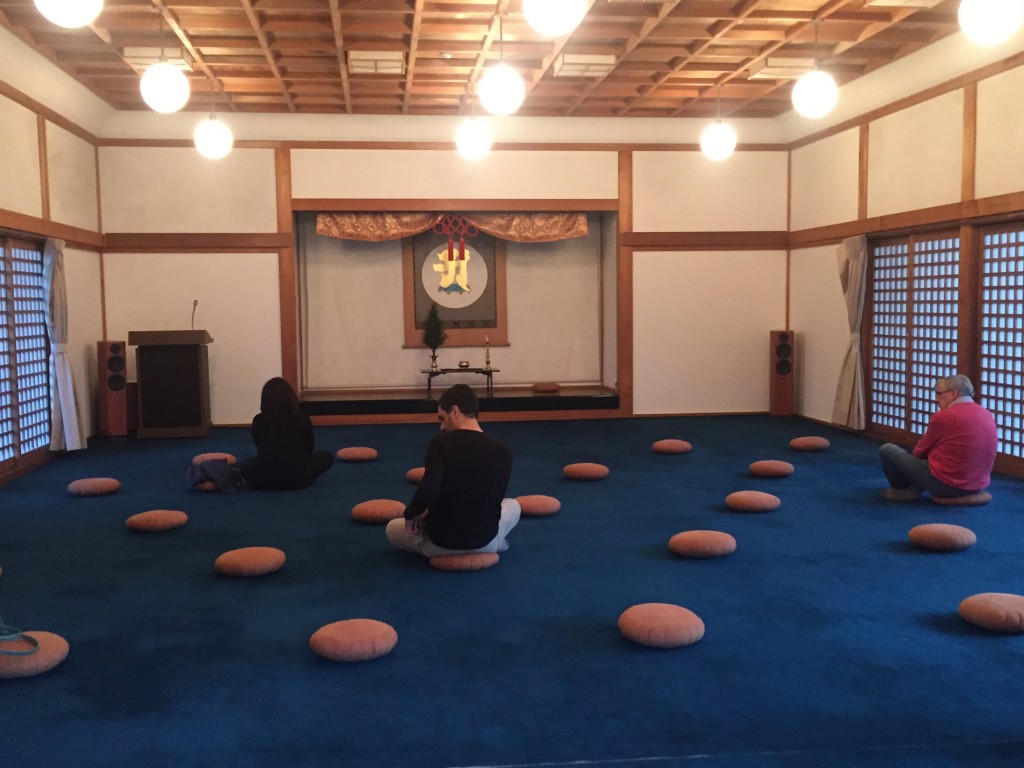
Getting ready for meditation.
After finishing the meditation session, Naoko and I returned to our room and soon heard a knock on our door as one monk came in to serve us our special Buddhist dinner made up of only vegetarian food. This is known as shōjin ryōri, or “devotion cuisine” in Japanese and, even though I wasn’t sure about everything that I was eating, the dinner that I enjoyed in the temple was one of the most delightful elements of my temple stay. On a chilly November evening, the warm meal with delicious hot tea was perfect and a relaxing way to prepare us for our evening tour of the cemetery, which we’d decided was unmissable.
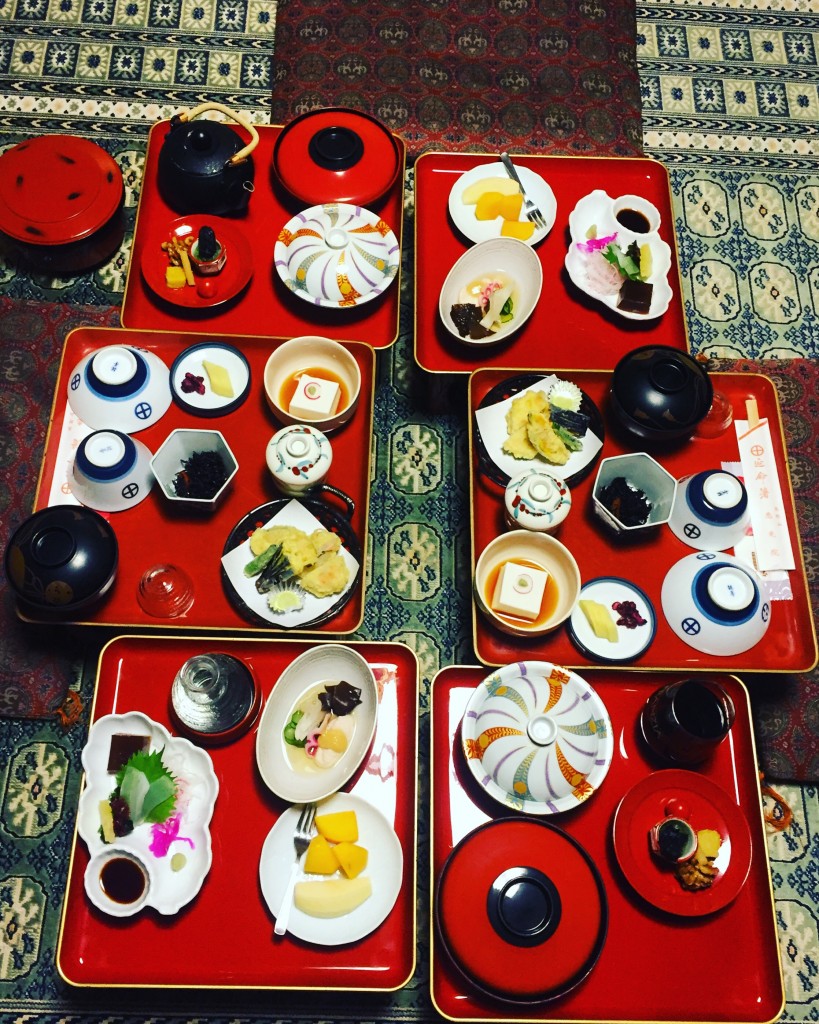
Shojin Ryori – the food of Buddhist monks – this dinner was so delicious!
Our Night Tour through Japan’s Largest Graveyard
The Okunoin night cemetery tour offered by Ekoin Temple is open to anyone staying in Koya-san who signs up for the tour on this website. The night that we attended, Ekoin provided winter coats to those who hadn’t brought enough winter clothing to withstand the chilly mountain air. Once our energetic monk tour guide, Nobu, started leading us to the front of Okunoin Cemetery, however, I completely forget the cold. I had never walked through any kind of cemetery at night before, and I’m sure most people would say the same, but this cemetery was like nothing that I’d ever experienced before with its towering cedar trees on both sides of our path and its strangely shaped stones with five levels, which Nobu explained were of Buddhist origin alongside Shinto torii gates. Nobu had a mesmerizing way of drawing out the pronunciation of every syllable in English while also using more hand gestures to explain what he was saying than even the most traditional of Italians. It reminded me of the way that you might talk to a group of kindergarteners, though because we were in a cemetery and he was a monk, it was hard not to pay attention regardless and wait for his next gesticular exaggeration. Nobu explained that the Japanese welcomed all backgrounds to Okunoin and anyone is permitted to be buried in the cemetery. He also explained that the Japanese liked to use Shinto ceremonies for birth and life-related ceremonies, Buddhist practices for funerals, and suddenly turned Christian only for “white dress” weddings. Nobu told us about a number of legends or superstitions related to the cemetery and we eventually crossed a bridge and found a large number of stone Buddhas of different sizes to our right. Nobu instructed us to pour water over any Buddha that we liked as part of the cleansing ceremony before entering the area of Torodo Hall. Torodo itself was closed, but Nobu led us behind the temple in front of the mausoleum of Kobo Daishi himself. He explained that only the chief monk of Torodo Hall can serve Kobo Daishi his meals every day and pointed out the golden lotus flowers to the right and left of the entrance to the mausoleum. In the darkness, under the multitude of lanterns hanging above us in now-quiet Torodo Hall, Nobu suddenly started chanting loudly in unintelligible Japanese, the words flowing out in a rhythmic confident monotone for a full five minutes. I can see how it’s easier to meditate when using a chant as I fell under the spell of the rhythm of Nobu’s words as our group stood all alone in the middle of Japan’s largest ceremony. Even now, several months later, I have relived that powerful moment many times, the sheer size and history of Okunoin and its stone lanterns lighting the way to this incredible temple.
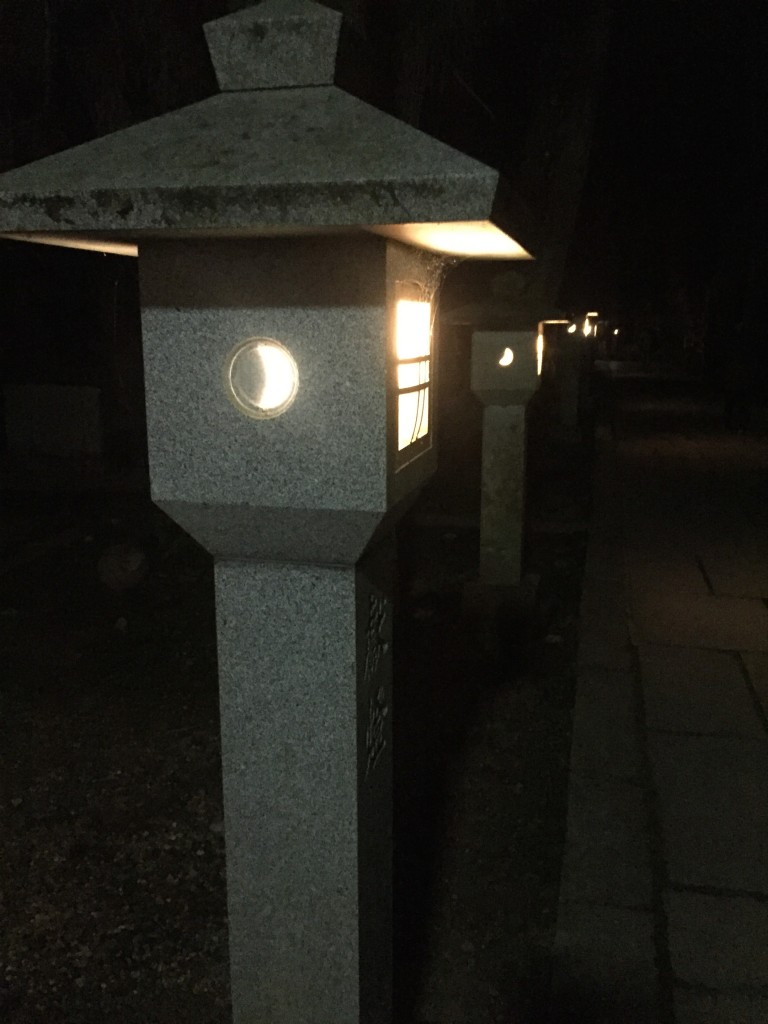
Walking past these amazing stone lanterns all along the path of our night tour of Okunoin added so much to the ambiance
After Nobu finished his chant, he walked with us back to the front of the temple and reminded us to come back to check out the lantern storehouse beside the main temple during the day, promising that its beauty was well worth the effort. As he reached the front of the temple, Nobu turned to us and told us to take our time making our own way out of the cemetery and back to Ekoin (seriously, this monk was leaving us alone with 200,000 graves), but he left us with an interesting final message. “Your house,” he said, “is like a representation of your mind.” “When your house is clean, so is your mind. So take care to keep your house clean and your mind will feel clean too.” With that, Nobu walked off into the distance.
Just before bed, I took advantage of the community bath on the temple grounds, which turned out to be quite small but a nice way to warm up after walking through the chilly temple hallways. Temples are certainly not known for their central heating. Luckily, Ekoin does provide a space heater in the room and Naoko and I soon drifted off to sleep to prepare for an early morning at fire ceremony.
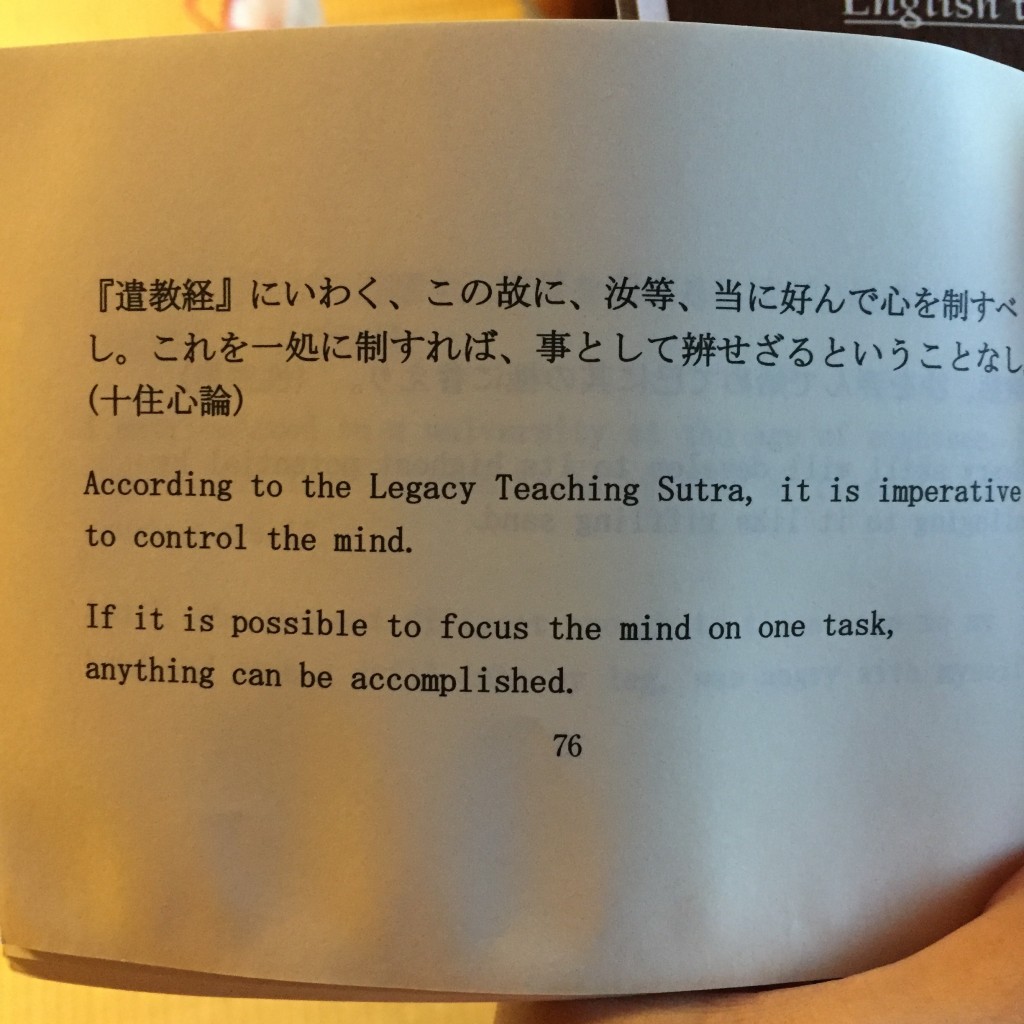
Buddhist sayings from Kobo Daishi himself at Ekoin Temple
At 5:30am, the alarm went off and we hesitated to get out of warm futons but got up and made our way to a different hall next to the main temple building and watched as a monk slowly built a fire while other monks chanted as burned away sticks which represent the root of human suffering. This was followed by breakfast again served back in our room and then Naoko led me in a morning yoga session in our room (so nice to be traveling with a certified yoga teacher!) and we packed everything up to check-out and headed back to Okunoin for a look during the day.
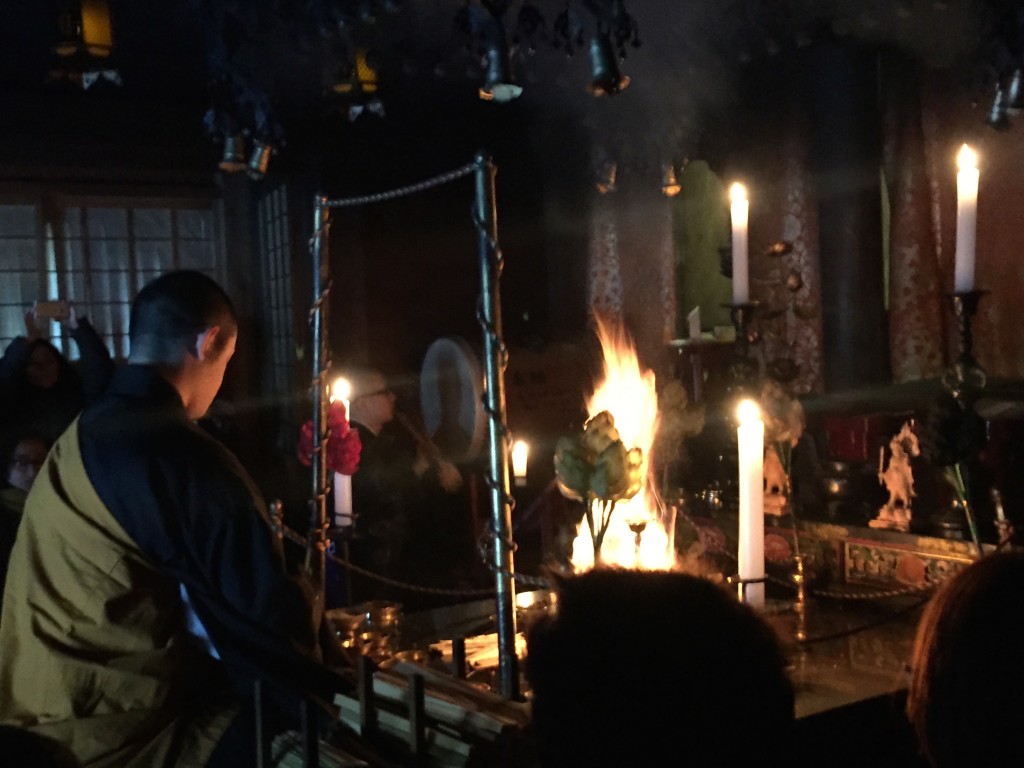
The morning fire ceremony at Ekoin Temple
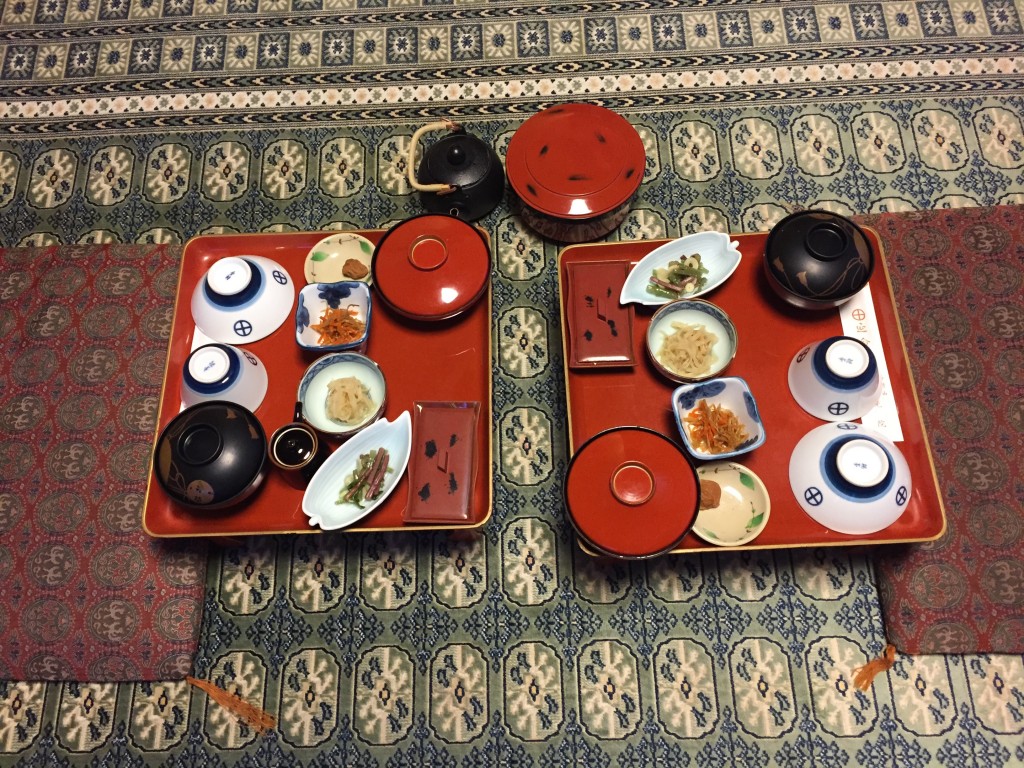
Breakfast
One More Look at the Graveyard by Day
The sheer vastness of Okunoin cemetery is really made evident during the day. The temple and lantern hall were also open and are really impressive for seeing such a huge number of lanterns. November is also a wonderful time to visit, as the autumn leaves were their most impressive inside the cemetery, showing much more color than what we were able to see at Ekoin. Keep your eyes open for some interesting tombstones including one shaped as a rocket!
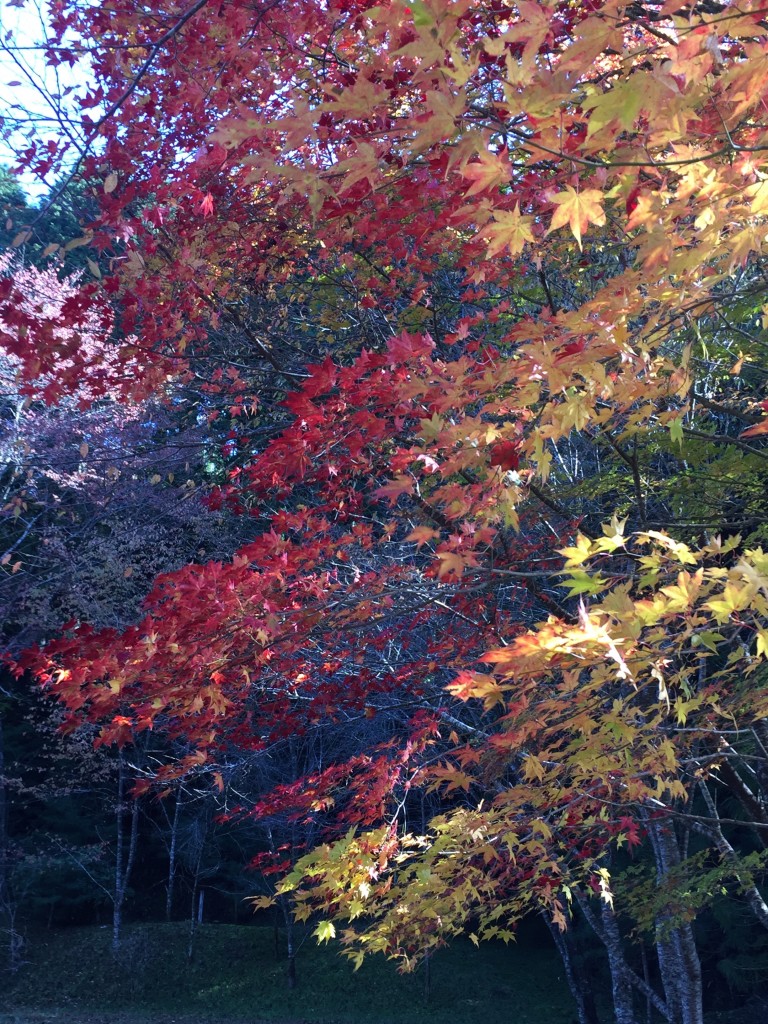
Autumn beauty – Okunoin
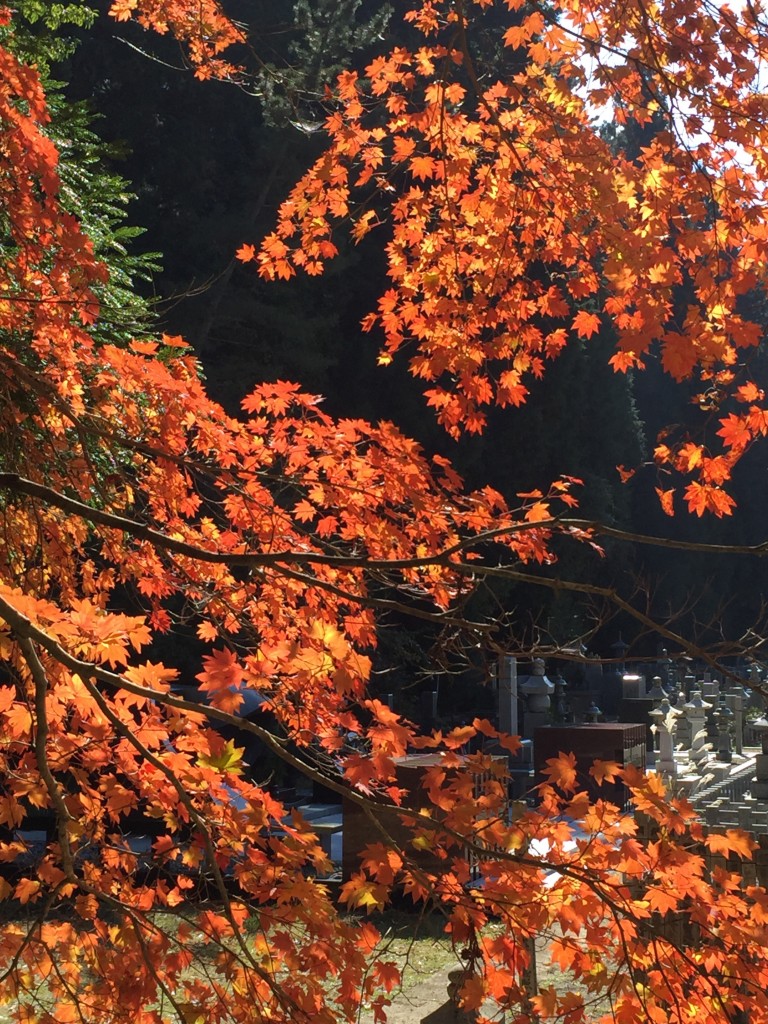
More fall colors
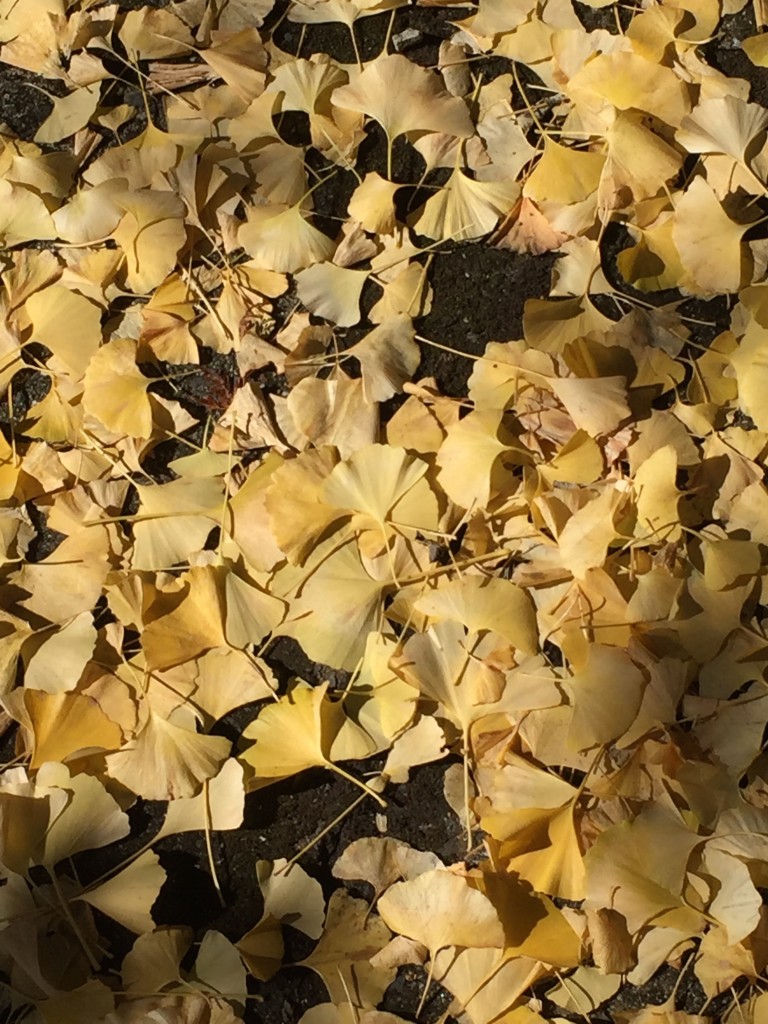
Leaves from a gingko tree
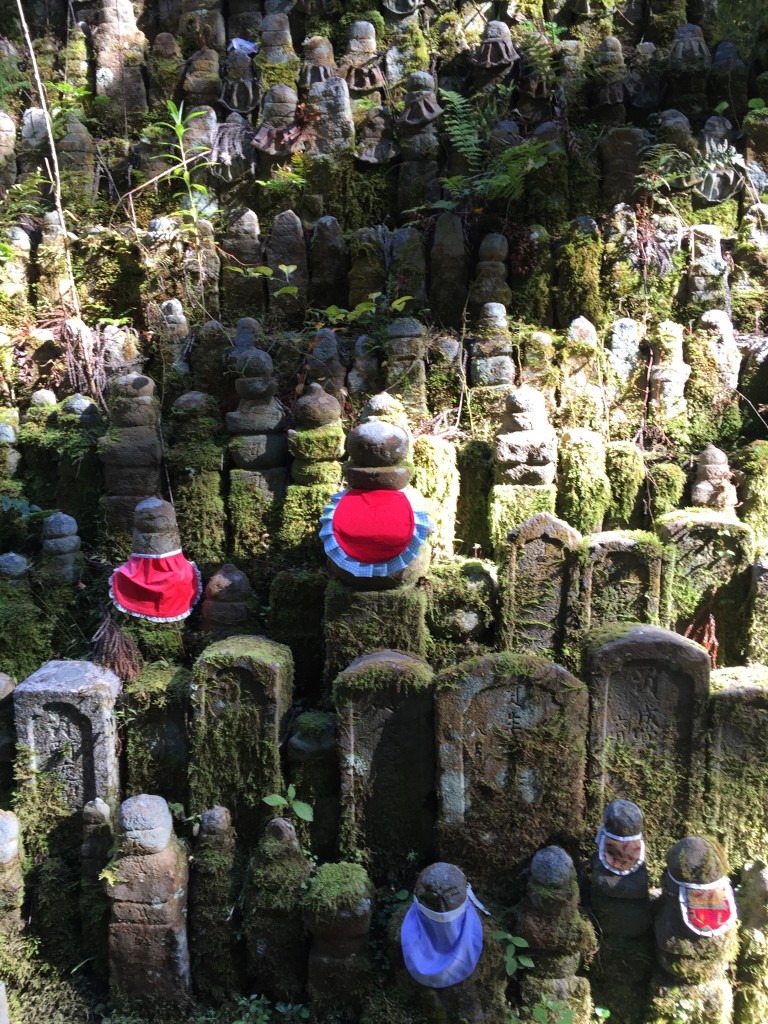
The deity that you see here is named Jizo and he is the protector of travelers and children. It is said that children used to weat read bibs such as these and that dressing statues of the Jizo deity will bring merit in the afterlife.
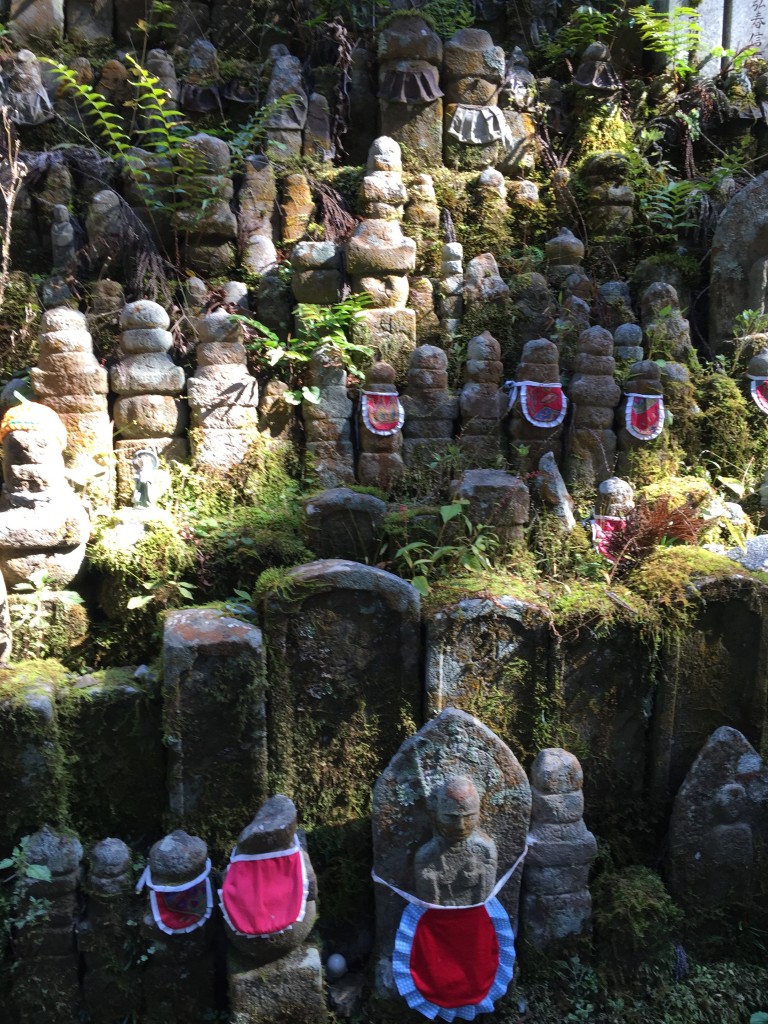
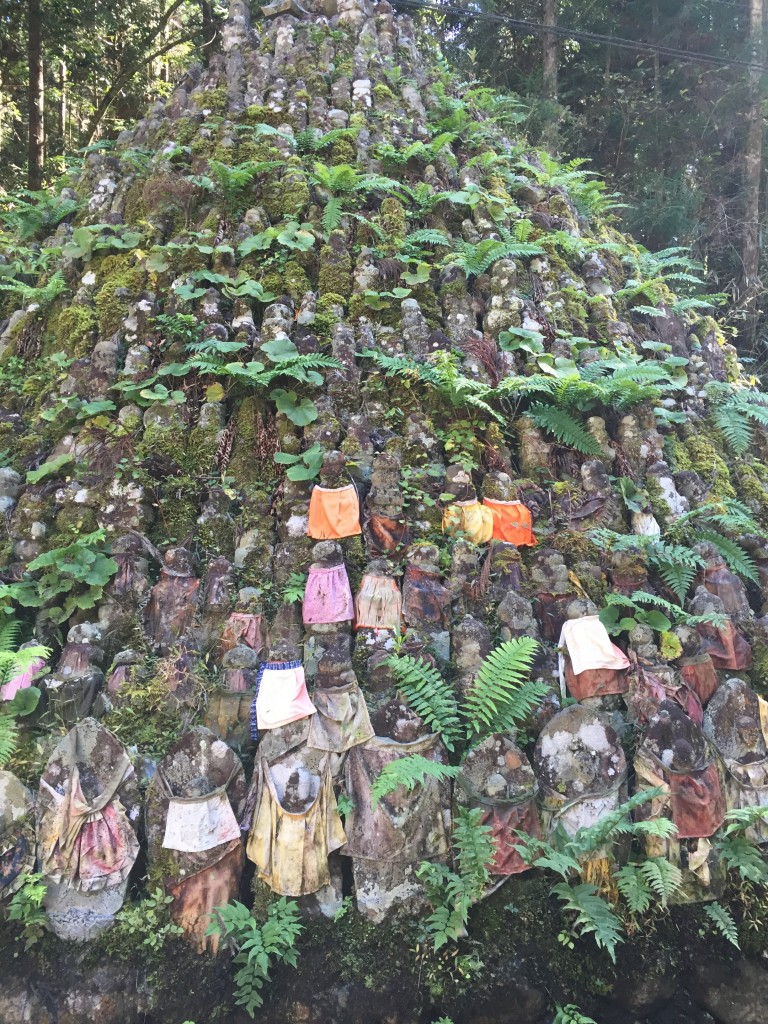
A large mountain of Jizo statues near the lantern storehouse
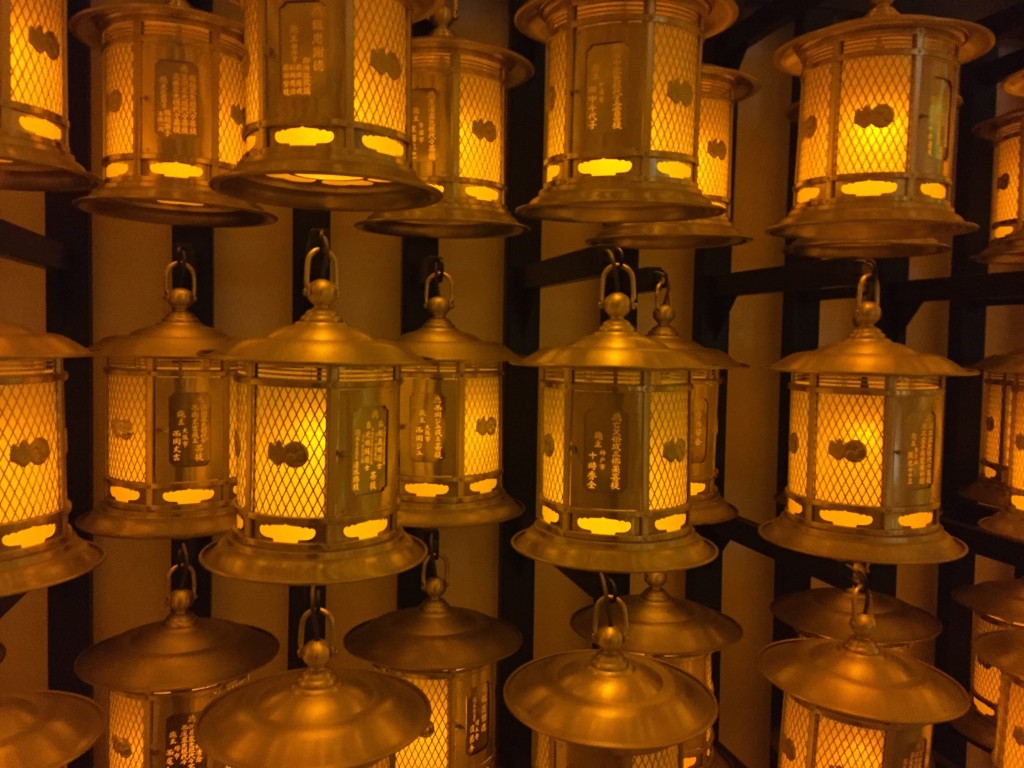
The lantern storehouse
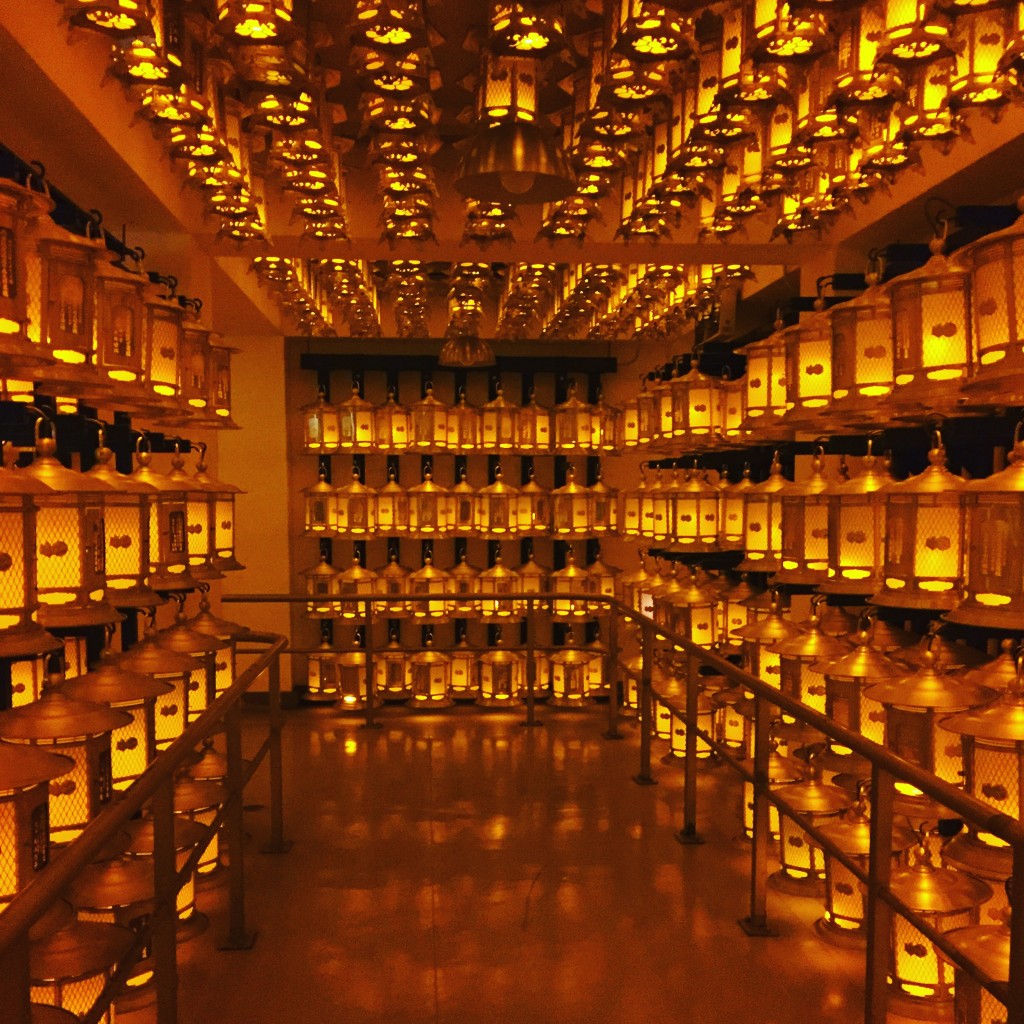
I’d never seen so many lanterns.
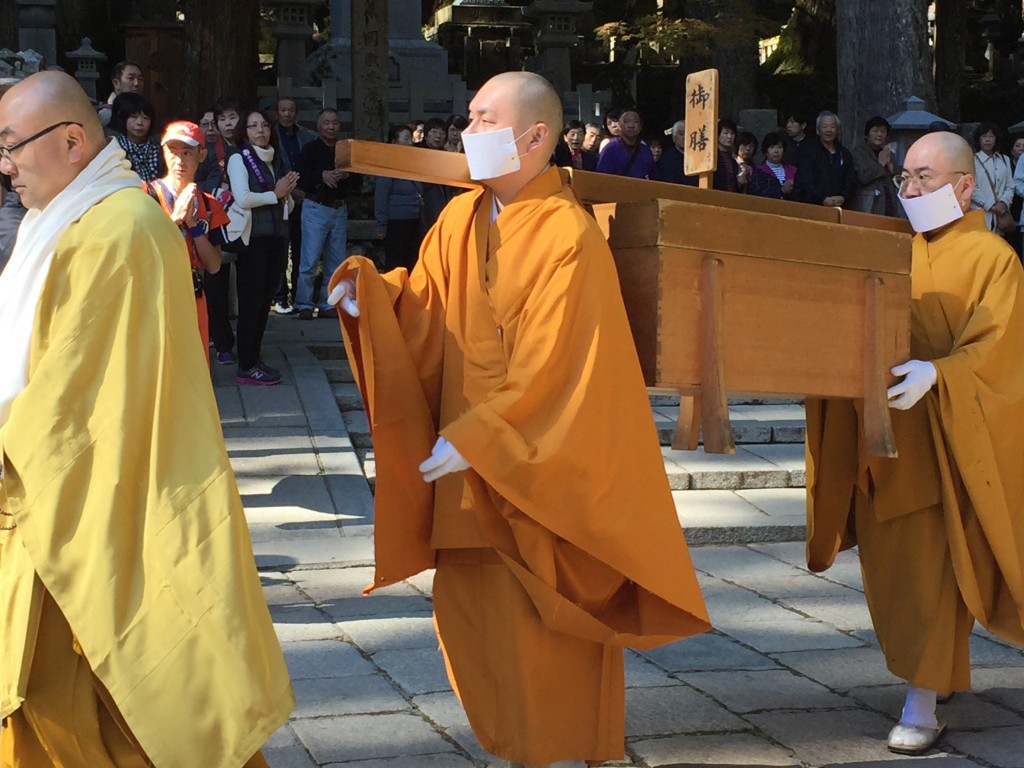
Monks preparing food for Kobo Daishi, who is fed directly by the head monk twice a day
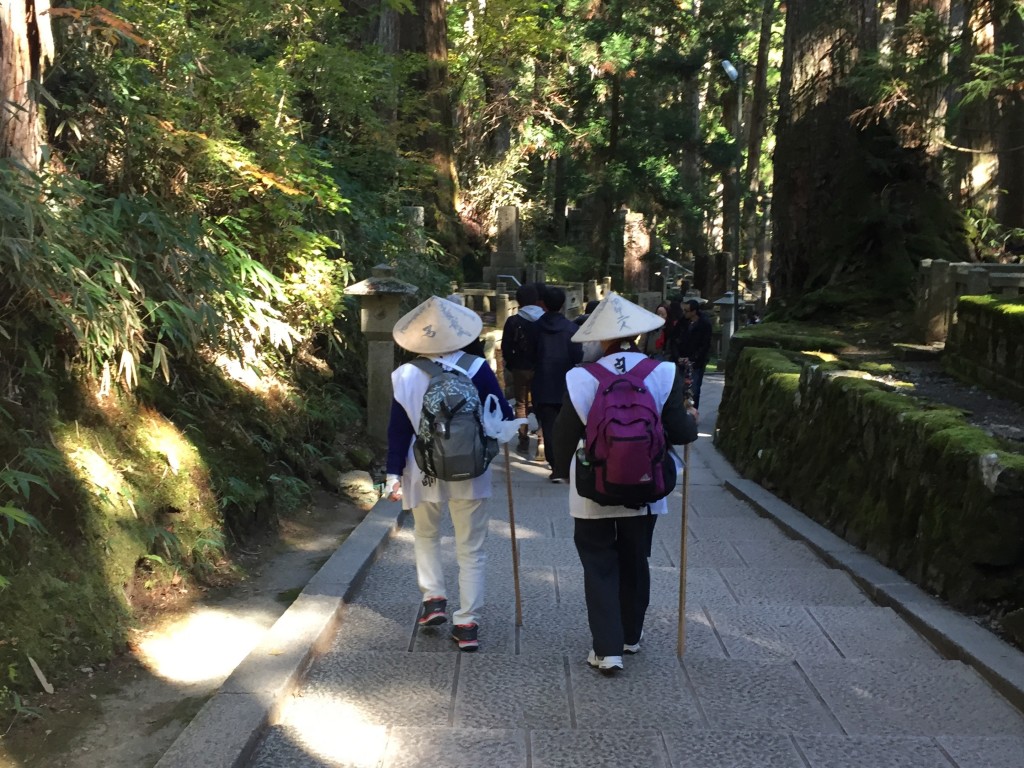
Mt. Koya is part of a World-Heritage honored path followed by Buddhist pilgrims for over a thousand years. There were many pilgrims in Okunoin likely finishing or starting their journeys.
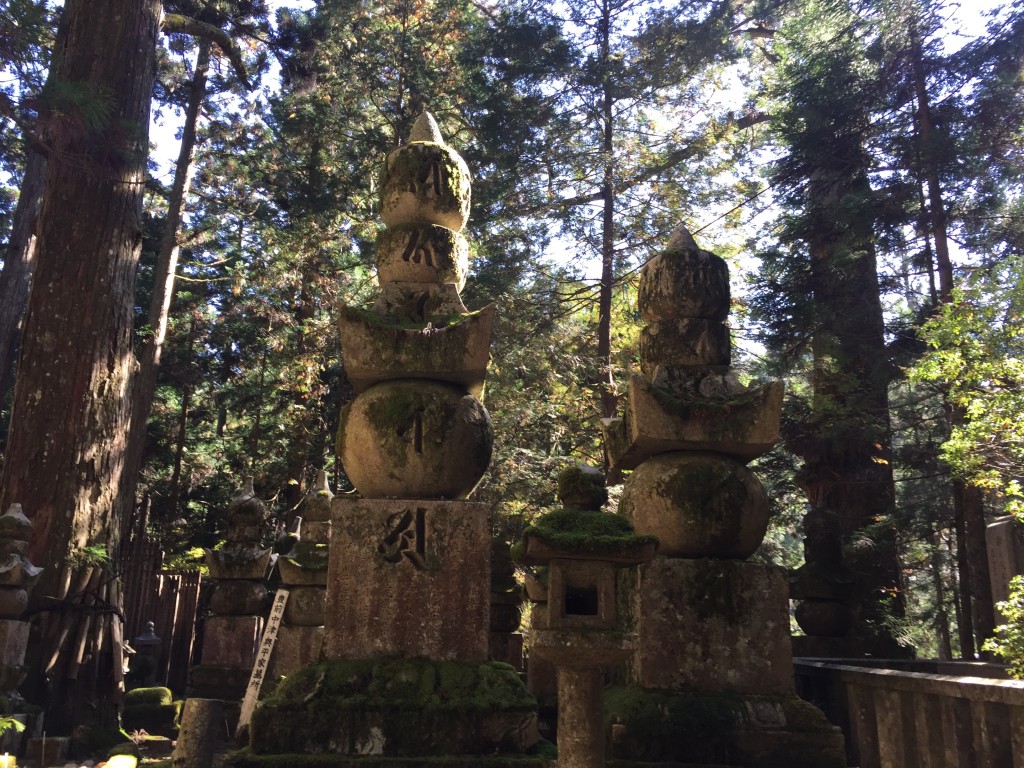
These different parts of small Buddhist pagodas known as Gorinto in the cemetery that are said to represent the Five Elements including water, air, earth, fire, and energy, or void
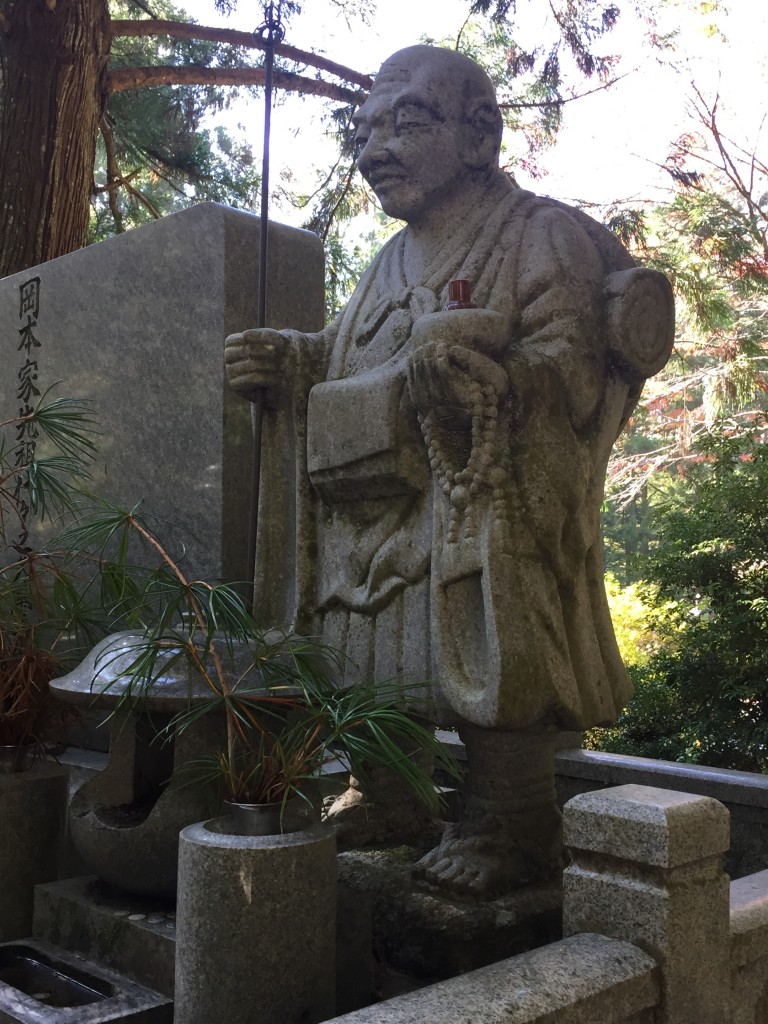
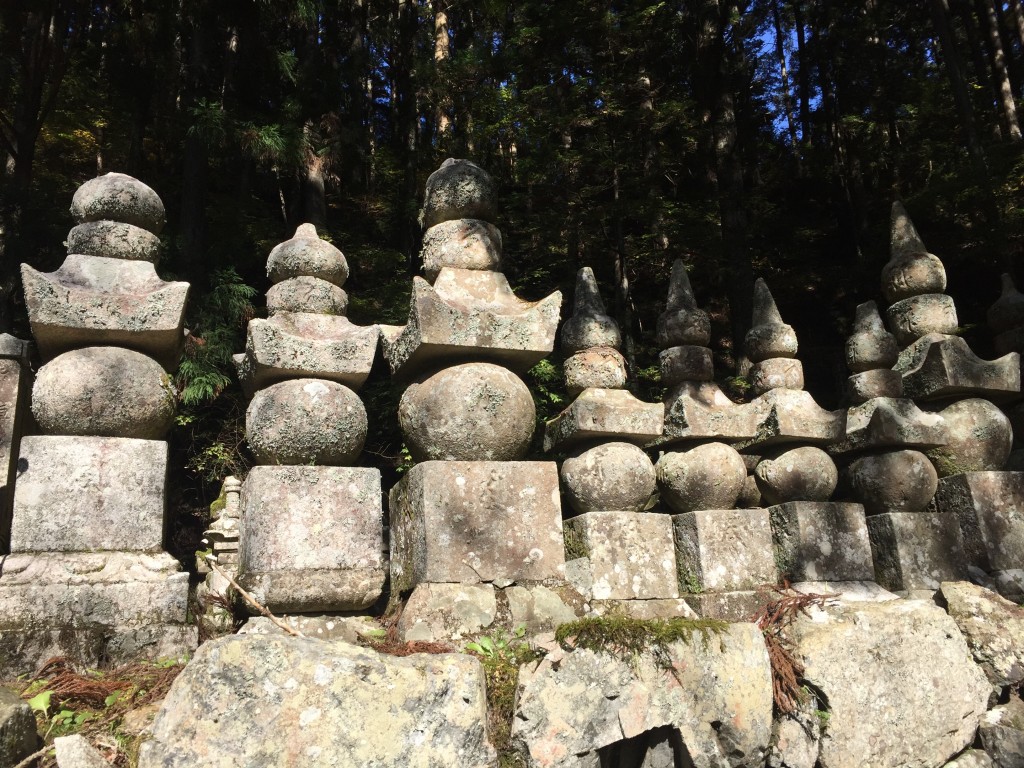
Many Gorinto
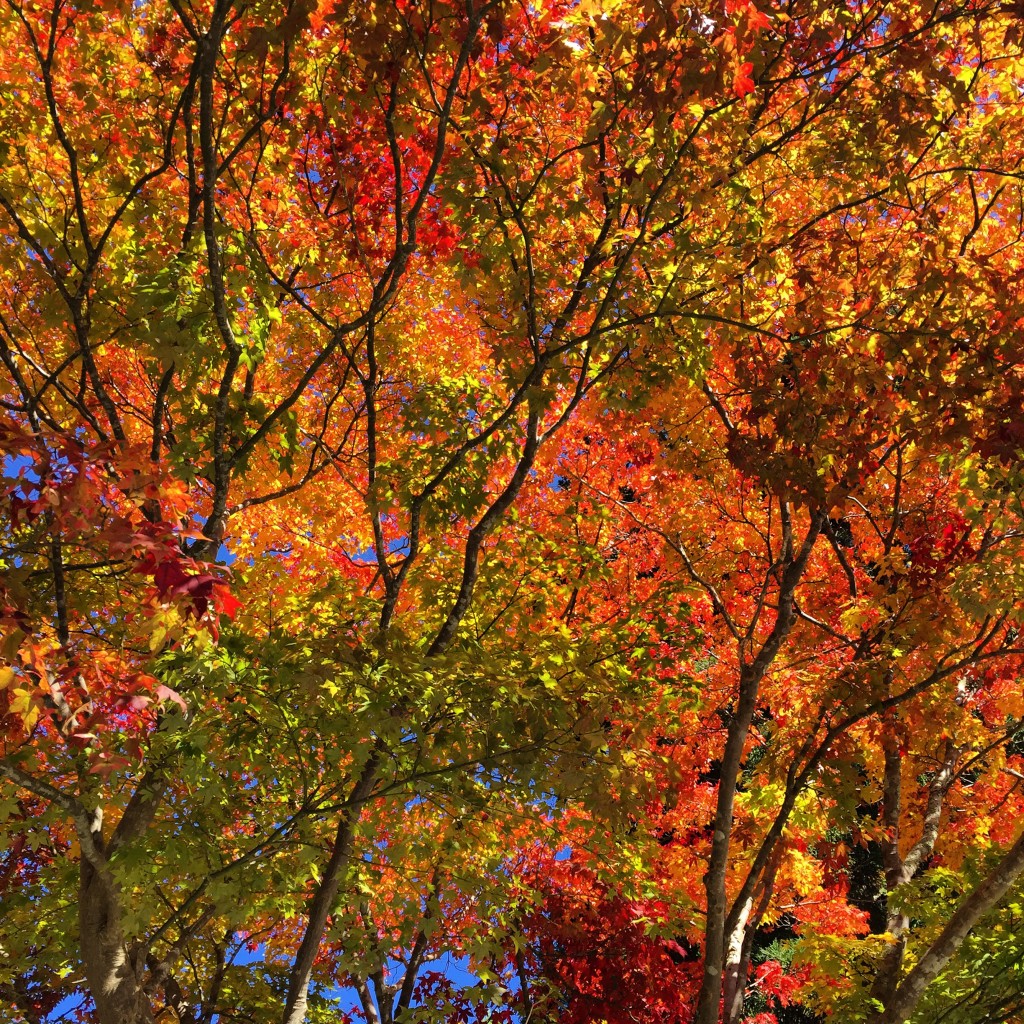
Autumn beauty
The rest of the town of Koya-san has a large number of souvenir shops, a few restaurants (though not as many as one would think, as the best food is clearly that being served at the temples), and lovely mountain scenery. I recommend Bon On Shya for a nice alternative to temple food with vegetarian options and Komi Coffee for a nice stop next to the cemetery. Another don’t miss area is the Danjo Guran, which Naoko and I unfortunately did not have time to see on this trip.
By mid-day, Naoko and I headed back to the cable car station by bus, after a failed attempt to walk there ourselves (the road is actually completely closed to foot traffic after a certain point so be sure to take a bus back to the station!) and, I have to say, I certainly could’ve stayed longer. Mt. Koya makes a fantastic side trip from Kyoto/Osaka for one or two nights (although, please note that many of the trains from Osaka to Mt. Koya are not covered by the JR Rail pass. For a list of discounted train fares for the Koya area, please click here. For information on a longer route to Mt. Koya using the JR Rail Pass, click here.
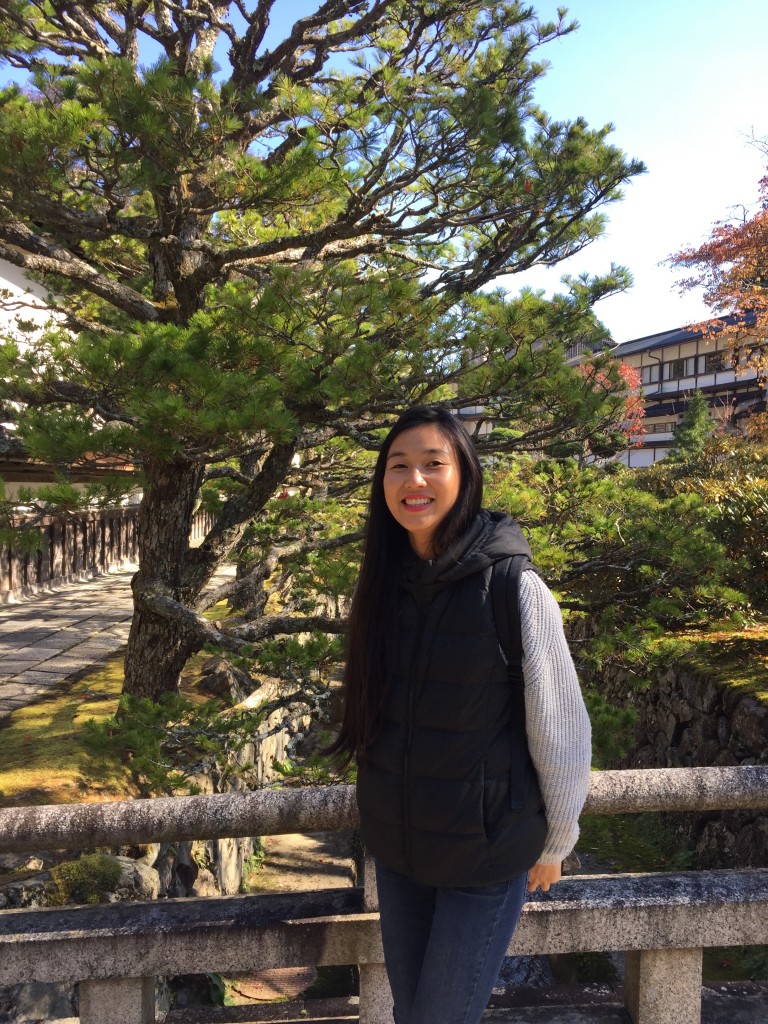
Thanks for coming along with me, Naoko!


